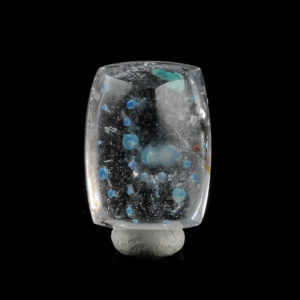Brazil has significant mineral occurrences scattered all across the country through the Minas Gerais State (Portuguese for General Mines), and has by far the largest amount of mineral localities, mines, and species reported. Bahia and Rio Grande do Sul States follow in at second and third. Many states such as Paraiba and Espirito Santo are famous for only a few deposits of high quality material and otherwise are not producers.

Brazil’s regional geology shows that it has a pretty even mix of igneous, sedimentary, and metamorphic rocks throughout the country. In most general terms, the Amazon River basin is dominated by recent sediments, the Central to Central Eastern portion of the country is composed mostly of ancient and metamorphic rocks which host pegmatites and economic metal mines, and the southern portion of the country is mostly a large igneous province composed of mesozoic flood basalts. Intrusions of exotic alkaline igneous rocks are also numerous in the southern portion of Brazil. Many unusual rock types were discovered in these alkaline igneous intrusions. These rocks tend to be enriched in exotic elements such as zirconium, niobium, and titanium and are the type locality of a distinctive set of minerals.
Brazil’s pegmatites are of various types and some even are hybrids of LCT and YNF pegmatites. Many are quite complex and some are unique and hard to describe. Perhaps Brazil’s most famous ‘unusual’ pegmatite is exploited by the Batalha Mine in Paraiba State. This mine produces cuprian tourmaline (elbaite) known widely as Paraiba tourmaline. Paraiba tourmaline has a turquoise to purplish color and often has flecks of copper coating the surface of the crystals. It is one of the most valuable gemstones in the world. Brazil is probably the most tourmaline rich country in the world. It produces a good amount, if not most of the world’s gem quality tourmaline and tourmaline specimens though Pakistan is slowly but surely catching up. Some of the most well known pegmatites in Brazil for gem tourmaline are the Jonas Mine, the Pederneira Claim, the Santa Rosa Mine, Cruzeiro Mine, Golconda Pegmatite, Barra do Salinas, and possibly hundreds of other mines, most of them small and worked by hand and with small quantities of explosives.

Brazilian pegmatites may be well known primarily for their gem minerals, but they are also famous for producing superb phosphates, which may be some of the best in the world. Brazil’s namesake mineral- Brazilianite is one of the most beautiful phosphates in the world. It forms large olive-oil colored prismatic glassy crystals. Specimens over 10cm wide have been found at the pegmatite in Linopolis, Minas Gerais. Hydroxylapatite from the Sapo Mine in Minas Gerais is exceptional as well. Often, the prismatic to almost tabular, greenish crystals stack on top of each other and form long curved stalagmites. This type of apatite formation is rare from pegmatites.
Numerous other kinds of mineral deposits are found in Brazil. Brumado in Bahia is one of the most well known non-pegmatite localities in Brazil. It is a talc and magnesite deposit that had produced gorgeous green and red uvites, emeralds, pink topaz, dolomite, and many other minerals. Ouro Preto in Bahia is also a famous non-pegmatite locality in Brazil and is a city richly endowed with minerals. It is famous for imperial topaz, hematite roses, and quartz crystals, both colorless and rutilated.
